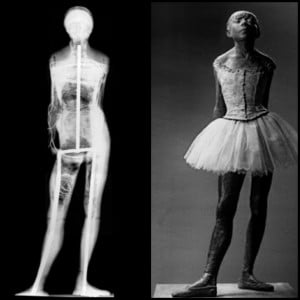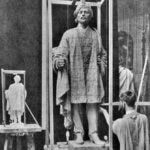The diagnostic techniques of a work of art
As already seen in a previous in-depth article, a work of art is also an object with its own physicality.
Often diagnostic campaigns can be fundamental that allow us to understand the structure of the object itself, the substances from which it is composed and any interventions it has undergone over the years.
There is no single method of approach to diagnostics, which must be well thought out and studied in relation to the precise work under investigation. A real scientific discipline that requires special instrumentation, the most invasive diagnostics must be carried out by adequate technicians with suitable training. With this contribution we do not want to go into the details of all the possible examinations applicable to the works, but only to give a general overview, which allows the reader a taste of the subject.
The basic premise is that, even if they are scientific analyzes and therefore provide precise objective data, they need to be interpreted. A team work is therefore essential that sees the collaboration between technicians and historians. The latter must be able to contextualize the information obtained in order to give a critical reading of the work in question.
For example, the presence of a particular type of pigment is not necessarily symptomatic of the precise dating of a work, but must be related to the historical story of the same and the possible interventions it has undergone over the years. For this reason it is always necessary that these data be interpreted also in the face of the history of the work itself, also in the light of any restoration interventions.
Diagnostic investigations are divided into two macro-categories: non-invasive and invasive ones.
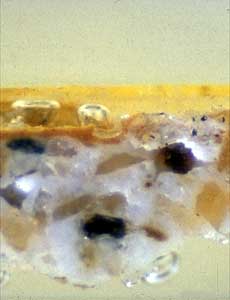
The former involve a visual analysis, albeit with an instrumentation capable of “undressing” the work gradually, viewing even the deeper layers. The invasive ones instead imply that a sample is taken from the
work and are further distinguished in non-destructive (allowing the re-use of the sample) or destructive. The latter in particular, being the ones that can most affect the work and damage it, must only be done if really necessary. They also require highly specific procedures and machinery and are therefore carried out in large restoration laboratories (such as the ICR or the Opificio delle Pietre Dure). This type of research must be justified by a real occurrence, such as the need to know the exact chemical composition of the pigments used in a painting, in order to fully understand the artist’s technique and therefore the type of degradation he has suffered or that could present.
This information is important both for study purposes and for a possible restoration, to understand how and with what type of substances to intervene.
The most easily performed are certainly the non-invasive ones, also thanks to specific equipment they allow you to see what is not with the naked eye.
One of the most commonly used is UV fluorescence, achieved through specific lamps, called Wood’s lamps.
This practice allows you to see any additions of surface paints, based
on the different fluorescence intensity that can be seen with this survey. It therefore allows you to observe more recent interventions, including any supplementary or corrective repainting made with substances different from the original ones, as well as the presence of environmental particles.
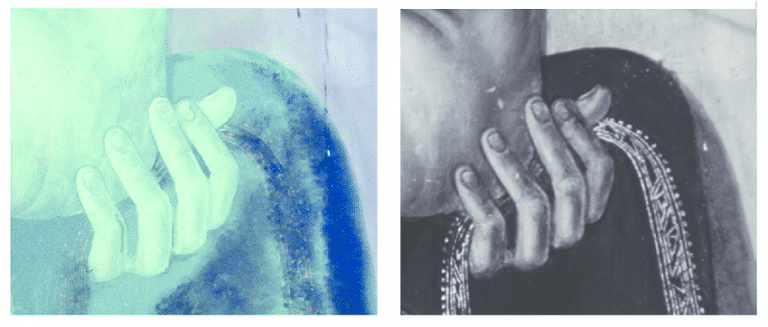
While this practice can be applied to both paintings and sculptures, others cannot be used indiscriminately for all types of art. This is the case of infrared, which is mainly used in studies on pictorial works. This reflectographic technique allows you to go beyond the layers of paints and pigments, to arrive at the preparatory layer.
As you can well imagine, this practice is useful to understand the evolution of the work, to see any regrets of the artist in the course of work or to study the working method, for example with the use of preparatory cartoons or the creation of a freehand drawing.
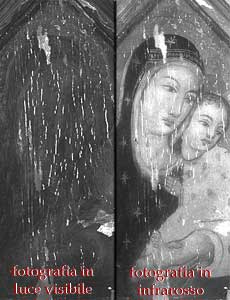
X-rays, which can also be applied to the sculptures, allow for a further threshold, crossing the work directly.
They provide fundamental data regarding the construction of the work, the material used and possible congenital structural damage or data over the years.
These analyzes cannot and must not be done randomly, but must be carried out within a precise and timely diagnostic plan.
Therefore, before starting work on the work, it is necessary to have a clear idea of the purpose to be pursued and the purpose with which these studies are carried out. It is also necessary to be well aware that each artifact presents its singularity with particular problems.
